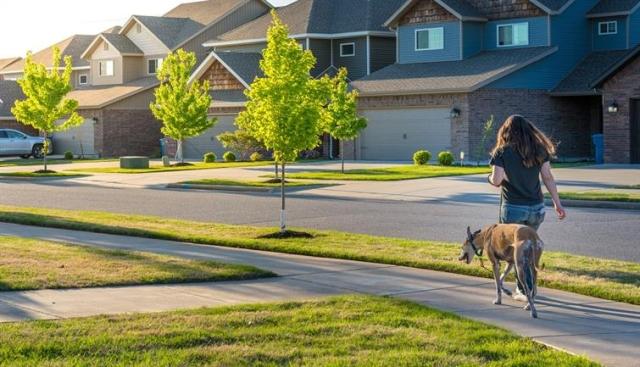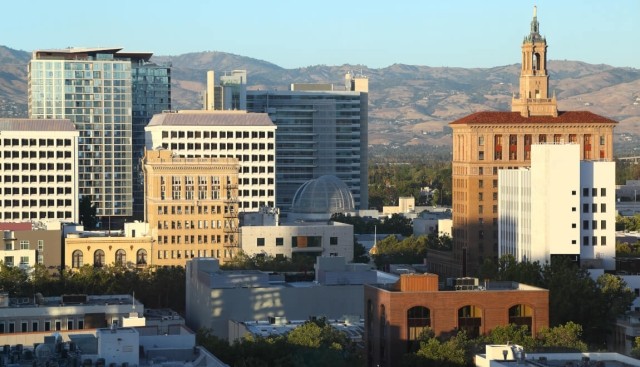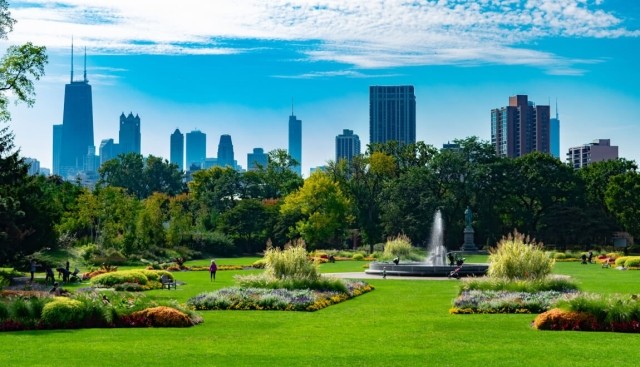While apartment living remains the most appealing option for many renters, a new trend is developing. Single-family rental neighborhoods are growing in popularity. These single-family rental houses, also called built-to-rents, provide renters with the lavish amenities of an apartment complex — pools, on-site fitness centers, dog parks, clubhouses, etc. — without the permanency of home buying. Single-family neighborhoods are rapidly growing throughout the US. According to CoStar Group, one-third of all US rental properties are single-family homes, the highest percentage since 1965.
So, what's driving the trend? The housing market has been a bit rocky with the decline in home ownership and mortgage prices. Since family sizes are growing and renters are accumulating more pets, millennials are slowly outgrowing their apartments. Millennials are finding it difficult to save up for down payments on homes, especially while having thousands of dollars’ worth of student loan debt. According to a Unison Home Buyer Survey, some 92 percent of millennials consider homeownership to be a good investment, but 43 percent of this age group have saved less than $3,000 for a down payment. Thus came the appeal of renting single-family.
What are single-family rental neighborhoods?
In the real estate world, a single-family home is defined as a house set alone on its own piece of property, with the single-family neighborhood encompassing these homes. Another common term is built-to-rent, where real estate investors build houses with the intent to use them as rental properties. According to Urban Institute reports, about 16 million rental properties today are single-family homes, and another 13 million rental households are expected to be formed by 2030. With the decline in homeownership, these neighborhoods are becoming more sought after.
Who is interested in single-family rental neighborhoods?
Millennials want extra space, privacy, and pet-friendly options, making them the primary demographic to rent in single-family neighborhoods. Since the pandemic, renting these houses has become more popular, especially for those wishing to move away from the hustle and bustle of major cities into the quiet and secluded suburbs. Renters interested in these neighborhoods are also wanting apartment-like amenities, including the benefit of having a professionally-run community with a property manager.
What to Consider About Living in a Single-family Rental Neighborhood
There certainly can be some perks and downfalls to the detached home style. Choosing between an apartment or a single-family neighborhood depends on your preference and various other factors. Some factors to consider are:
- Your family size
- Your budget
- Commute
- Property management
- Amenities
It's best to weigh out the pros and cons to see what property would work best for you.
The Pros
Property Management: Similar to living in an apartment, single-family rental communities have the benefit of professional property management. This ensures that maintenance requests are met along with any other issues the renter may be facing.
More Space and Extra Finishes: Extra storage space is a huge plus too. More living space means more room for entertaining, bigger kitchens, and more bedrooms. Single-family rental neighborhoods typically come with upscale finishes, stainless-steel appliances, hardwood floors, and in-unit washer dryers. The stand-alone houses have front and back yard space, so if you're seeking fenced-in backyards for the fur babies, single-family living may be right for you.
Amenities: Some single-family neighborhoods offer apartment-style amenities, a major perk for renters coming from complexes. Clean Living Communities, a Florida development company in the southeastern region of the US, offers spaces for yoga and meditation, even providing free education regarding nutrition and sleep in their single-family neighborhoods.
The Cons
New Neighbors: Due to the apartment complex's proximity to the neighbors, renters often form relationships with their shared wall mates. In single-family rental neighborhoods, there’s more distance between you and your neighbors. People may frequently be moving in and out, making it even harder to develop relationships with the folks next door.
Higher Rent: Compared to that of an apartment, rent is relatively higher. The Clean Living Communities state their rental houses range from $1,800 to $2,500 per month. There is a high potential for rent increase within these communities as well.
Commute/City Amenities: Apartments are commonly found throughout cities and suburbs, whereas single-family rental neighborhoods are typically located towards the city's outskirts. This could be problematic, especially for renters who work in the city. Consider the amount of time and gas it will take to get to the office. Apartments are more suited for those looking to live in a prime location near shops, restaurants, and a nightlife scene. So, if you want city amenities, single-family neighborhoods might not be your thing.
How to Find Single-family Rentals
If you're looking for increased space with extra finishes and apartment-like amenities, moving to a single-family neighborhood may be right for you. However, it can be limiting as single-family houses are typically more expensive than apartments, not to mention you still have to follow landlord rules, which may mean no pets. When in the market for a new home, it's best to do your research and weigh your options. If single-family neighborhoods fit your lifestyle, finding available rentals in your area may be difficult since it is such a new trend. Be sure to use our array of filters on Apartments.com. You can easily find furnished single-family homes, with some even including utilities in the cost of rent. Check out the commuter options, neighborhood boundaries, and local school campuses in the area before committing to a new home.






